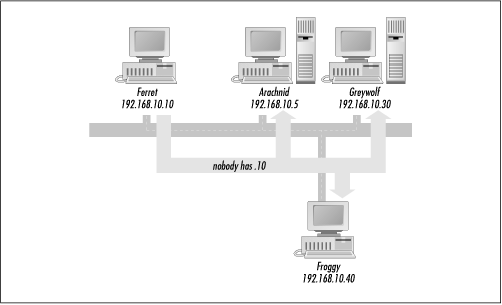UnARP
As discussed in Section 3.1.1 earlier in this chapter, there are no Time-to-Live mechanisms defined in the ARP standard. Each vendor implements its own ARP timers, ranging anywhere from two minutes to twenty minutes and more. This wide diversity can cause several problems.
For example, a DHCP client may be assigned an IP address, use it for a while, and then release it. Moments later, another client may be assigned the same IP address from the DHCP server. If any systems had the first DHCP client’s hardware address stored in their cache, they would not be able to communicate with the new DHCP client.
One possible solution to this problem that has been proposed is UnARP, another variation on the ARP theme as defined in RFC 1868. UnARP dictates that a special ARP packet should be broadcast whenever a node disconnects from the network, explicitly telling other devices that the node is going away, and that the cache entry for that host should be flushed. This warning would allow another device (such as another DHCP client) to reuse the IP address immediately, without having to worry about stale caches causing any problems.
Essentially, UnARP is an unsolicited ARP response with zeroes in the Source and Destination Hardware Address fields that get broadcast across the network, as illustrated in Figure 3.7.

There are some key concepts to UnARP that are subtle ...
Get Internet Core Protocols: The Definitive Guide now with the O’Reilly learning platform.
O’Reilly members experience books, live events, courses curated by job role, and more from O’Reilly and nearly 200 top publishers.

